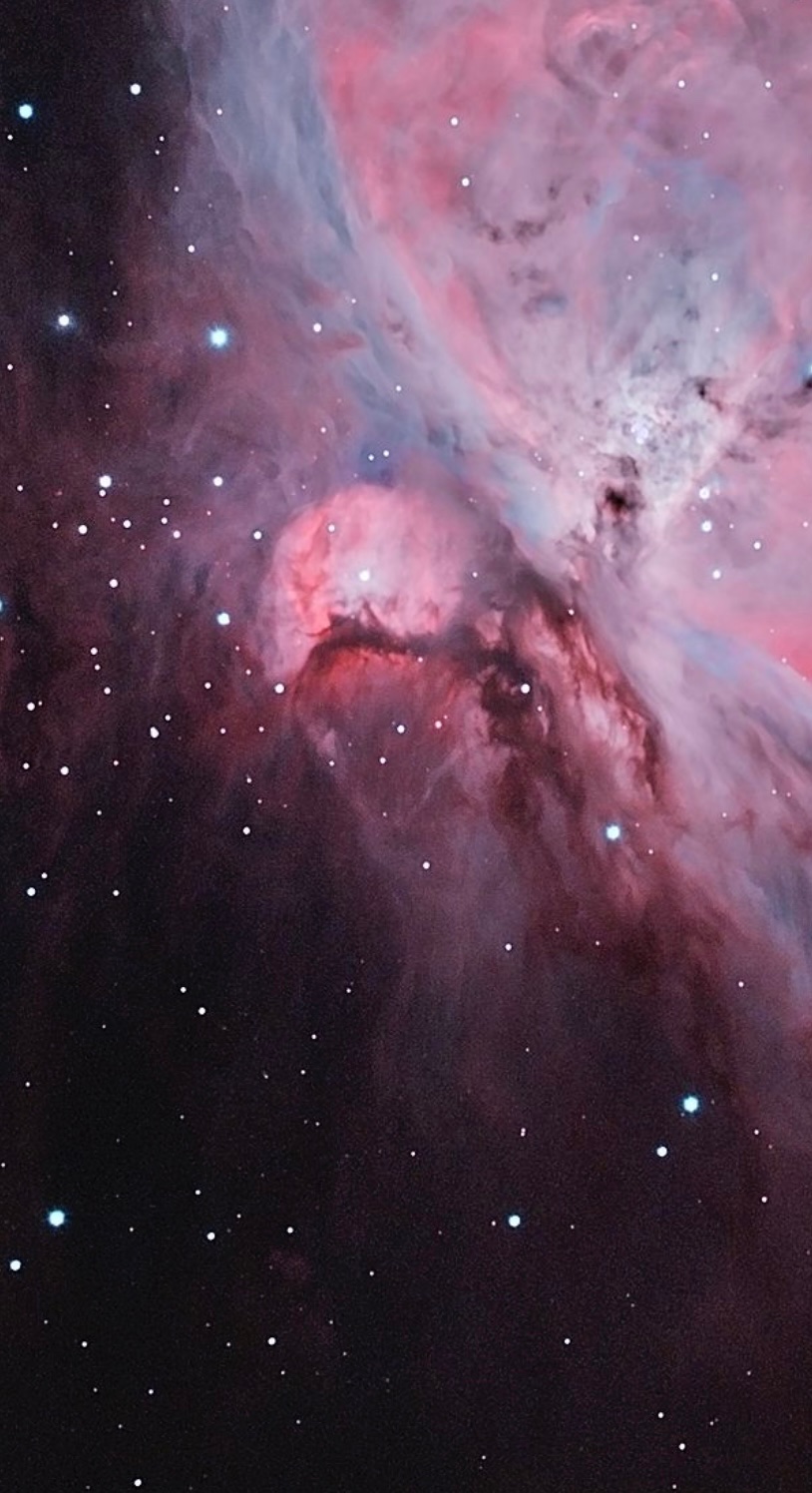Page 1 of 1
Question about M42
Posted: Sat Feb 19, 2022 3:00 am
by Jnicholes
So, tonight, I went out and attempted the track Uranus as well as comet 19P/Borrelly. I failed at both of those. Unknown reason. I attempted to check my tracking by going to the Orion Nebula. When I got there, my tracking was working, and I got my best picture of the Orion Nebula EVER.
I don’t care that I missed comet Borrelly and Uranus. This is my BEST PICTURE EVER!
I actually have a question about the Orion Nebula. As you can see, I also caught M43, De Mairans nebula. Right below De Mairans nebula is a dark patch in the Orion Nebula, commonly referred to as the “fish mouth.”
What is the fish mouth? Is it a dark nebula? Cloud of dust? What is it exactly? Does anyone know the answer to this? I’m currently researching myself.
I’m just curious.
Jared
Re: Question about M42
Posted: Sat Feb 19, 2022 11:40 am
by OzEclipse
I don't know for sure but dark nebulae are usually interstellar dust laying line of sight somewhere between the nebula and us.
Joe
Re: Question about M42
Posted: Sat Feb 19, 2022 12:29 pm
by turboscrew
This is what I found:
Orion Nebula (M42, NGC1976) hii region that is easily visible to the naked eye as the central object in the sword of orion (RA 05h 35m.4 dec. -05°27'). The main part of the nebula is separated from a smaller part of the same cloud, known as M43 or NGC1982, by a dark absorbing region called the fish's mouth.
http://www.sozvezdiya.ru/eng/o.php
Looks like
@OzEclipse is right. Funny, that it's so hard to find much anything about it.
Re: Question about M42
Posted: Sat Feb 19, 2022 1:01 pm
by Juno16
Hi Jared,
Nice capture!
This area is M43, the Fish Mouth Nebula.
Re: Question about M42
Posted: Sat Feb 19, 2022 4:16 pm
by KathyNS
The dark cloud is one of the most recognizable features (along with the Trapezium cluster) of M42, easily visible in small scopes. It is a cloud of star-forming dust, blown into a column by the stellar wind from the Trapezium stars.
Re: Question about M42
Posted: Sat Feb 19, 2022 4:30 pm
by Jnicholes
Thanks for getting back. So it’s star forming dust, huh? I was wondering about that.
Thanks!
Jared
Re: Question about M42
Posted: Sat Feb 19, 2022 6:04 pm
by notFritzArgelander
KathyNS wrote: ↑Sat Feb 19, 2022 4:16 pm
The dark cloud is one of the most recognizable features (along with the Trapezium cluster) of M42, easily visible in small scopes. It is a cloud of star-forming dust, blown into a column by the stellar wind from the Trapezium stars.

This is correct in every detail. The fish mouth is the darker area intruding into M42 and is part of the dust cloud separating M42 and M43. M42 and M43 can be viewed as a big fluorescent bubble with partial obscuration and intrusion from interstellar dust that's responsible for the fish mouth. Annotated images can be found here:
https://skyandtelescope.org/observing/s ... d12172014/
Re: Question about M42
Posted: Sat Feb 19, 2022 11:00 pm
by Juno16
Thank you Kathy @KathyNS and nFA @notFritzArgelander for the information about the Fish Mouth Nebula. I really wasn’t sure, but now I have it!
Re: Question about M42
Posted: Sun Feb 27, 2022 4:56 pm
by Don Pensack
Juno16 wrote: ↑Sat Feb 19, 2022 1:01 pm
Hi Jared,
Nice capture!
This area is M43, the Fish Mouth Nebula.

M43 is NOT the Fish Mouth. The Fish Mouth is the dark intrusion into the Regio Centralis in M42.
M43 is the comma-shaped section of nebulosity with a bright star in the center that stands away from M42.
Re: Question about M42
Posted: Sun Feb 27, 2022 4:59 pm
by Don Pensack
Dark nebulosity is usually a large cloud of gas and dust that lies closer to us than stars or nebula behind it.
It is dark because it doesn't have a nearby star reflecting from its dust grains, or exciting the gas to emit light.
Dark nebula is usually gas, not dust, but can be a mix of both, as is the case with most nebulae.
Re: Question about M42
Posted: Sun Feb 27, 2022 6:36 pm
by notFritzArgelander
Don Pensack wrote: ↑Sun Feb 27, 2022 4:59 pm
.....
Dark nebula is usually gas, not dust, but can be a mix of both, as is the case with most nebulae.
Dark nebulae owe the bulk of their darkness to dust. If they were mostly gaseous they would be more transparent. The extinction of light from behind them is due entirely to interstellar dust grains in the densest part of cold molecular clouds.
Re: Question about M42
Posted: Mon Mar 07, 2022 6:23 pm
by Don Pensack
A little research on dark nebulae shows their opacity is largely due to dust grains, as the last poster noted.
However, composition-wise, they are mostly gas, and almost all of the gas is molecular hydrogen.
Also, they are largely transparent in the infrared and longer wavelengths.